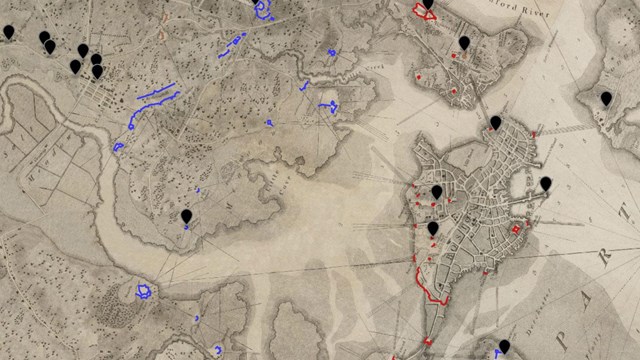
NPS Photo/P. Boyce About Dorchester HeightsThe Dorchester Heights Monument commemorates the fortification of those Heights on the evening of March 4, 1776. After months of planning, George Washington ordered continental forces and local volunteers to stealthily fortify this location with cannon. This military operation led British forces to evacuate Boston two weeks later, on March 17, 1776. In 1898, the General Court of Massachusetts commissioned a monument to stand on the remaining hill of the Heights. Designed by the architectural firm of Peabody and Stearns, the white marble Georgian revival tower commemorates the 1776 victory. Dorchester Heights' historical significance and the development of the surrounding community vividly reflect the history and growth of the city of Boston. Dorchester Heights Monument and Grounds are stewarded by the National Park Service. Monument & Grounds Hours Today's Hours: Dorchester Heights Monument and Grounds is currently closed to the public due to ongoing restoration work. Today's Hours: Dorchester Heights Monument and Grounds is currently closed to the public due to ongoing restoration work.All operating hours Please see the following article for updates on the restoration project: Dorchester Heights Monument in Boston National Historical Park to be Restored through GAOA Funding. Admissions Free admission Free admissionAccessibility The grounds of Dorchester Heights are accessible, however the hill is very steep. The grounds of Dorchester Heights are accessible, however the hill is very steep.Contact Info and AddressAddress: Dorchester Heights Monument, Boston, MA 02127 News
Dorchester Heights Monument Restoration
Learn about the multimillion-dollar restoration of the Dorchester Heights Monument with funding from the Great American Outdoors Act (GAOA). History
History of Dorchester Heights
Learn about the significance of Dorchester Heights through this historical overview. Photo: National Park Service/©Louis S. Glanzman 
Interactive Map: The Siege of Boston
Explore the extent of the Siege of Boston of 1775-1776 with this interactive map depicting fortifications and troop locations. MapPhotosLearn More |
Last updated: July 29, 2025
